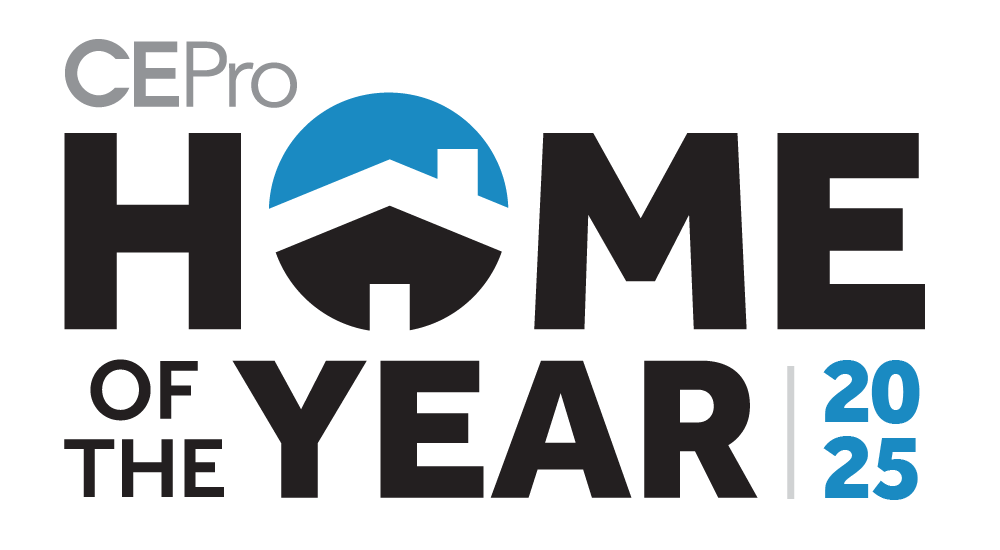Artificial intelligence has taken center stage in the technology industry as a whole, but the professionally installed smart home is developing along a quieter, more intentional path. While Big Tech races to push cloud dependent assistants and broad language models, companies solidly entrenched in the custom installation channel are shaping AI to meet very different expectations.
What’s Happening with AI at the Consumer Smart Home Level
Amazon and Google are both pushing deeper into AI for the consumer smart home, and their updates are beginning to influence homeowner expectations. Amazon is rolling out a more conversational Alexa that uses generative AI to understand natural phrasing, respond with more context and control groups of devices more reliably. Google is taking a similar approach by integrating its Gemini model into the Google Home ecosystem, allowing for more flexible voice requests, smarter routines and the ability to interpret intent rather than strict commands. Both companies are also using AI to improve camera analytics, notifications and event detection across their respective ecosystems.
Apple is also expected to more officially enter the smart home market with dedicated devices and an upgraded HomePod that will likely leverage Apple Intelligence and a smarter Siri. While these capabilities are expanding quickly, they remain largely cloud dependent and broad in scope, which contrasts with the privacy focused, system wide intelligence being developed inside the professionally installed channel.
Why These Developments Are Worth Paying Attention to for Integrators
Across conversations with Josh.ai, Savant, ADI | Snap One and Crestron, a shared direction has begun to emerge for the smart home. AI is not meant to replace the smart home or automate it into opacity. It is meant to make it more natural, more intelligent and easier to support.
According to Josh.ai co-founder and CEO Alex Capecelatro, the momentum is beginning to shift, and the reality of the AI-enabled home is quickly approaching.
“People are beginning to understand that AI is a really good problem solver,” he says. “That means we do not have to convince you. We just have to make sure it works.”
Natural Language Is Rewriting How Homeowners Interact
For years, smart home interfaces revolved around touchscreens, apps and structured commands. AI is opening a new chapter by allowing homeowners to describe their intentions in everyday language.
Josh.ai has been leading that transformation with user tools that allow homeowners to use their natural language to create scenes and automations. In short, users can speak into existence the lighting and music they want during a themed party, all in the same breath.
“This idea of programming with natural language, that is the big shift from where we were a couple of years ago,” Capecelatro says.
The system supports typed interactions as well as voice, something Capecelatro says is essential for real world usage.
“I am a big believer in meeting people where they are,” he says.
Natural language reduces friction for integrators as well. Integrators can during a client walkthrough adjust scenes or create new ones without going back into deep programming layers. It turns system personalization into a fluid, collaborative process.
Savant’s Push Toward Private, In Home AI
As natural language evolves, Savant is pursuing its own proprietary in-home that is designed to run privately inside the home. While Savant has not committed to a specific launch timeline, Judd made clear that momentum is building behind the initiative.
Josh.ai’s rise in the custom integration industry, and Savant’s ambitions for its own branded AI capabilities, come as DIY players like Google, Amazon and Apple are improving their own platforms by adding AI features leveraging large language models (LLMs) and other advanced AI tools designed for more intuitive home control.
However, Savant Chief Revenue Officer Bryce Judd draws a clear distinction between consumer AI models and what a professionally installed home needs.
“There is a very big difference between the public versus the private side of a connected experience,” Judd says.
The smart home is not a place for cloud engines that collect data to support advertising or search. It is a private environment where families expect systems to respond accurately without external dependencies.
“You are interfacing with your home without the connectivity to an all-watching third party engine,” he says.
Savant’s developing AI aims to interpret intent, not just commands. Judd says a simple statement like “It feels cold in here” should be enough for the system to respond appropriately.
“It knows what you mean,” he says.
The company is building this intelligence specifically for custom installed environments, where context, stability and privacy matter more than breadth.
How Control4 Sees AI Evolving From Simple Triggers to Predictive Logic
AI is already playing a small but meaningful role inside Control4 systems, particularly through camera analytics that detect events and trigger automated responses. ADI Senior Director of Product Management Eric Fritz says these targeted applications reflect where AI is today in the professionally installed home.
“In today’s smart home, AI is still in its early stages,” he says.
Where he sees the biggest opportunity is in reducing the amount of manual programming required for automations. Instead of building every routine step by step, Control4 envisions a future where users describe what they want and the system interprets the intent. AI would also learn from patterns and suggest scenes or schedules based on real usage.
“We are moving from prescriptive, labor intensive use cases to predictive and naturally programmed experiences,” he says.
Fritz adds that consumer investment in AI will help accelerate those capabilities for the pro channel, even as Control4 maintains its long-standing emphasis on premise processing and data security.
He notes that AI will also influence how homeowners interact with Control4, with voice and text driven input on touchscreens and remotes becoming more common. Behind the scenes, AI will simplify design, device discovery and configuration, eventually supporting predictive maintenance to reduce downtime.
“AI anticipates system issues before they occur, minimizing reliability problems,” he says.
Fritz believes the rapid pace of innovation gives Control4 a chance to improve both customer satisfaction and integrator efficiency in the years ahead.
Crestron’s Focus on Integrator Workflow Before User Facing AI
Crestron is also embracing AI, but the company’s initial efforts are aimed squarely at improving the integrator experience. The earliest applications of AI in Crestron systems will enhance configuration, programming and troubleshooting, drawing from decades of accumulated support knowledge.
Michael Short, Crestron’s senior director of residential marketing, says this focus is intentional.
“Allowing them to deliver better systems faster with more data and with ease is going to be a big part that AI plays,” Short says.
Instead of pushing AI directly to homeowners, Crestron is prioritizing the tools that help integrators deploy and maintain systems more efficiently. Only after that foundation is built will user facing intelligence come into play.
Short says the complexity of real homes makes this sequencing important.
“Everyone lives differently at home and every home has more than one person in it,” he says. “The home adapting to the needs of a family is very complex.”
Crestron’s near term AI strategy is to simplify the integrator workload without introducing unpredictable or opaque behavior for homeowners.
What’s Practical Now and What Remains a Longer-Term Vision
Based on these interviews and simply put, what is publicly available for integrators to install in their customers’ homes, pro-level control companies take very different approaches to AI. Some appear to be more bullish on leveraging AI for the smart home, while others are taking a more targeted, thoughtful approach that doesn’t risk investing in AI at the expense of the user experience.
The idea of a predictive smart home has been floating around the industry for more than a decade. AI brings that possibility closer than ever, but the companies shaping this evolution emphasize clear boundaries: homes cannot guess at everything and human behavior is too variable.
Families have mixed routines, and those preferences shift. Allowing homeowners the ability to create routines and automations themselves can risk breaking other automations that they want to keep.
It’s clear that AI presents extraordinary new possibilities, but since the main goal is to improve the user experience, rolling it out before it’s truly ready can threaten to give the industry more bad press when it comes to usability and frustrations.
Although consumer technology frames AI primarily as a user feature, the custom installation channel may see the biggest benefits behind the scenes. AI powered diagnostics, configuration assistance, anomaly detection and knowledge guided support have the potential to reduce service time significantly and make large deployments more manageable.
These capabilities do not replace the integrator, but rather extend the integrator’s skill set, reduce repetitive tasks and help maintain system quality over the long term. The professional channel thrives on reliability, precision design and personal relationships. AI amplifies those strengths rather than replacing them.
Why the Future of Smart Home AI Will Favor Reliability Over Flash
AI in the smart home is not following the consumer playbook. It is evolving around the expectations of homeowners who value privacy, stability and personalized control. It is evolving around the needs of integrators who must build and support systems that span dozens of devices and vendors. And it is evolving around the reality that a home is not the same as a phone or a speaker with an array of connected devices and disparate systems rolled into one.
AI should help the professional smart home become more intuitive, more adaptive and more efficient without compromising trust.
While some have aspirations to push the modern connected home into a truly intelligent space that can learn user habits much like modern smartphones, the next generation of smart home intelligence may not be loud. It will be thoughtful, practical and grounded in the needs of the people who live with—and work on—these systems every day.
















